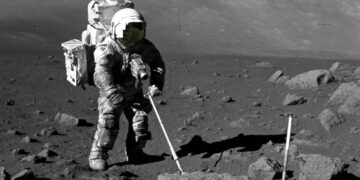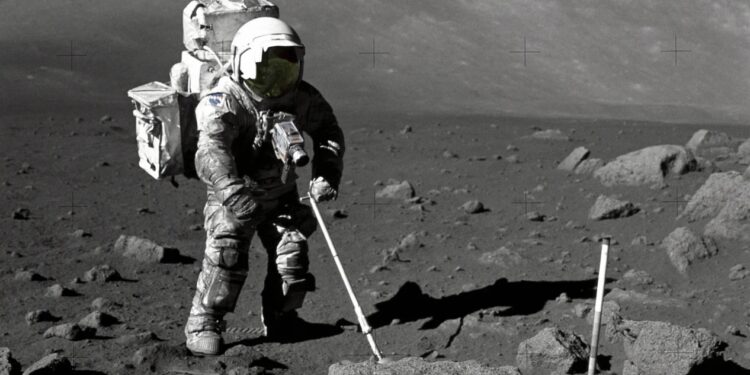By John Ikani
Recent analysis of lunar fragments, brought back by Apollo 17 astronauts, indicates that our moon is actually 40 million years older than previously believed.
Instead of the previously estimated 4.52 billion years, the new findings suggest that the moon’s age is approximately 4.46 billion years.
The precise age revelation offers fresh insights into the moon’s history and its role in the evolution of both the moon itself and Earth.
The moon has always played a significant role in the Earth’s development, as pointed out by study co-author Philipp Heck, a professor at the University of Chicago.
He noted, “Without the moon, life on Earth would look different. It’s a part of our natural system that we want to better understand, and our study provides a tiny puzzle piece in that whole picture.”
The leading theory, known as the giant-impact hypothesis, suggests that the moon was formed from the debris of a collision between a Mars-sized object and a young Earth. This material, held together by its own gravitational pull, is believed to have ultimately shaped the moon we see today.
However, the exact timing of this collision and the moon’s formation process have remained open questions.
To arrive at their groundbreaking conclusions, scientists focused on minuscule specks of a mineral called “zircon” found in moon samples from the final Apollo mission in 1972.
These zircon crystals are believed to be the first solids to crystallize after the moon’s formation, as they initially formed when the moon’s molten surface cooled down after its birth. Hence, they can offer crucial clues about the moon’s age.
Study co-author Philipp Heck stated, “Because we know how old these crystals are, they serve as an anchor for the lunar chronology.”
In order to determine the age of the lunar sample with precision, researchers meticulously identified and mapped individual atoms within the moon rock.
They employed a focused electron beam to “sharpen” the sample, similar to a high-tech pencil sharpener, as described by study lead author Jennika Greer, a research associate at the University of Glasgow.
The next step involved using a laser to evaporate atoms from the sharpened sample and measuring the speed of these atoms.
According to Greer, “How fast they move tells us how heavy they are, which in turn tells us what they’re made of.”
By measuring the proportions of uranium and lead atoms in the sample, and taking into account the known rates of atomic decay, the researchers determined the moon’s age to be 4.46 billion years, as outlined in the new study.
“It’s amazing being able to have proof that the rock you’re holding is the oldest bit of the moon we’ve found so far,” said Greer.
“It’s an anchor point for so many questions about the Earth. When you know how old something is, you can better understand what has happened to it in its history.”
This groundbreaking research is detailed in a paper published on October 20th in the journal Geochemical Perspectives Letters.


































